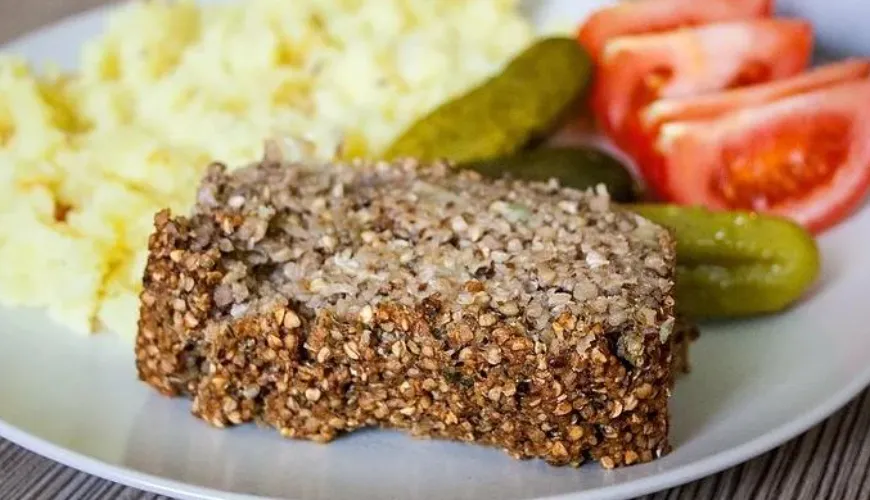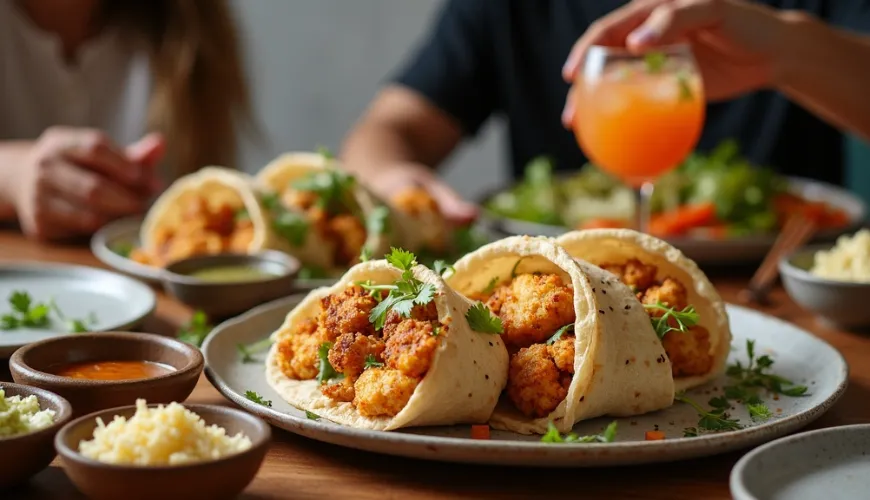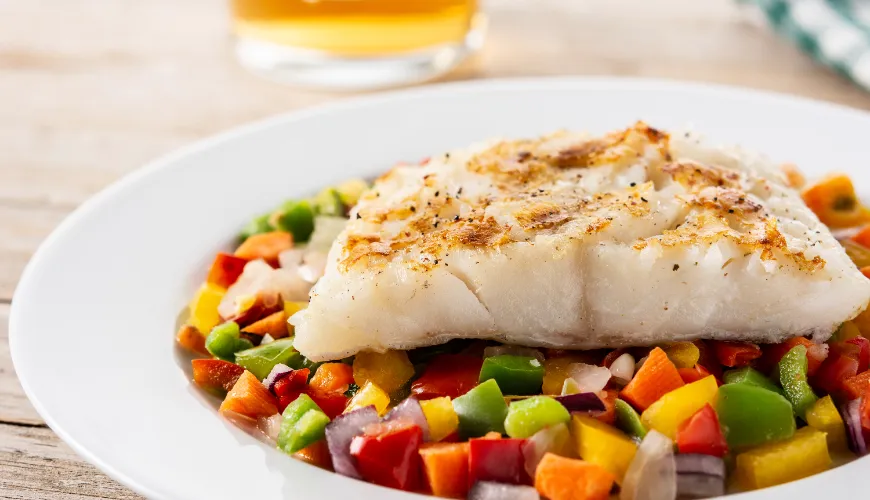
Why Fall in Love with Gua Bao as a Great Vegan Alternative

What is Gua Bao and Why Try it in its Plant-Based Version?
When you say "Asian cuisine," most people think of sushi, pho, or ramen. However, a lesser-known yet irresistible dish is increasingly appearing on the culinary scene – gua bao, sometimes nicknamed "Taiwanese hamburger." This fluffy treasure hidden in a steamed bun is winning the hearts of street food lovers worldwide. What's more, it tastes fantastic in a vegan version. How did gua bao originate, why is it so popular, and how can you prepare it at home without using animal products?
Originally from Southeast Asia, specifically Taiwan, gua bao is a popular street food dish and is also served on festive occasions. Its name translates to something like "cut bread," which perfectly describes its shape: a soft, crescent-shaped steamed bun filled with various ingredients. Traditionally, it is filled with braised pork belly, hoisin sauce, fresh herbs, and pickled vegetables. In recent years, however, gua bao has undergone a modern transformation, with vegan gua bao coming to the forefront, offering an ethically friendly, flavorful, and imaginative option.
Gua Bao as a Plant-Based Delight
While the classic version relies on meat and animal fats, vegan gua bao employs a creative combination of ingredients like tofu, tempeh, jackfruit, or marinated shiitake mushrooms. These alternatives not only absorb marinade flavors well but also add the texture and umami that every lover of Asian cuisine craves. You can also add crunchy peanuts, sesame seeds, quick-pickled vegetables, and various spicy sauces.
A great example is grilled tofu marinated in soy sauce with garlic, ginger, and maple syrup, complemented by kimchi, coriander, and homemade vegan mayonnaise. The result is a flavor harmony that will surprise even the most die-hard carnivores.
It's interesting how gua bao adapts to different world cuisines. In Berlin, you can find a version with smoked jackfruit and black beans, while in London, it's made with crispy cauliflower in tempura batter. In Prague, it's often filled with fermented tempeh or smoked tofu with crunchy carrot pickles.
What Makes the Fluffy Bun?
The key element of gua bao is undoubtedly the steamed bun, whose soft, fluffy structure resembles a cloud. It is not a classic baked bread but a dough similar to that used for Asian dumplings, which is steamed to achieve its typically soft and elastic consistency.
For home preparation, you can use several recipes, but if you want to save time and still achieve an authentic result, the ideal choice is to opt for ready-made buns like Chimei gua bao. This brand comes directly from Taiwan and is known for its quality and traditional processing. The buns are supplied frozen and just need to be steamed – in a few minutes, you have the perfect base for a homemade gua bao. Moreover, they are completely free of animal ingredients, making them perfect for a vegan diet.
Recipe for Homemade Vegan Gua Bao
Making gua bao at home is not difficult. If you have a steamer, it takes just a few dozen minutes. And the result is definitely worth it.
Ingredients:
- 4 steamed buns (e.g., Chimei brand)
- 200 g firm tofu
- 3 tablespoons soy sauce
- 1 tablespoon maple syrup or agave
- 1 teaspoon sesame oil
- 1 clove garlic (chopped)
- 1 teaspoon fresh grated ginger
- 1 handful grated carrot
- 1/2 cucumber sliced into thin slices
- fresh coriander
- sesame seeds
- vegan mayonnaise or chili sauce (e.g., sriracha)
Instructions:
- Cut the tofu into slices and marinate for at least 30 minutes in a marinade of soy sauce, syrup, sesame oil, garlic, and ginger.
- Fry the marinated tofu in a pan until golden brown.
- Steam the buns according to the instructions – for Chimei gua bao, it takes about 8–10 minutes.
- Place several slices of tofu into each bun, add carrot, cucumber, coriander, a teaspoon of vegan mayonnaise or chili sauce, and sprinkle with sesame seeds.
The result? A soft bun, crunchy vegetables, distinct marinade, and fresh herbs – a flavor symphony that transports you to the heart of Taiwan.
Where to Buy Gua Bao Buns?
While making your own buns is possible, most people prefer ready-made options. Chimei gua bao, which can be purchased in stores specializing in Asian foods or on online shops with vegan and healthy assortments, offers a quick and tasty solution. These buns are pre-cooked and deeply frozen, so you can always have them on hand in the freezer.
Other brands are appearing on the market, but Chimei maintains its reputation due to its quality, authenticity, and easy preparation. It's an ideal choice for those who want the original taste without the lengthy dough preparation.
Why Have So Many People Fallen in Love with Gua Bao?
Gua bao is not just food – it is an experience. It combines the softness of the steamed bun with the contrasting texture of the filling, balancing sweet, salty, and sour flavors. It's suitable as a quick lunch, an impressive party snack, or an unconventional dinner. Most importantly, thanks to plant-based filling options, it suits anyone looking for tasty, sustainable, and ethical food.
One fan of gua bao, Marie from Brno, describes: “I first tasted gua bao at a festival in Prague and immediately knew I had to try it at home. Since then, I make it at least twice a month; the kids love it. And the vegan version is absolutely delicious!"
In a time when interest in plant-based diets is growing and global cuisines are mixing and transforming, gua bao offers a great opportunity to enjoy something new, tasty, and healthy. Whether you decide on homemade preparation or opt for ready-made buns and fill them with your favorite ingredients, one thing is certain – you'll fall in love with this fluffy crescent.

